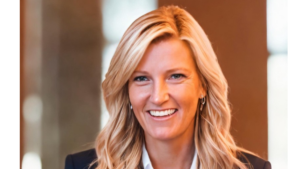YouTube is putting brand safety front and centre as the Google-owned platform looks to give advertisers a better, more trusted experience.
Product Marketing Manager Adam Burrows says that the platform, together with advertisers and the industry at large, are actively talking and seeking solutions that will help more quickly review and remove violent, illegal or inappropriate content.
He was speaking as part of a wide-ranging interview with New Digital Age, the first part of which is published here, and argues that advertisers should view YouTube as complementary to TV, rather than cannibalistic.
In this second part, he shares the brand safety measures that YouTube is putting into place and outlines what marketers should do in 2021, particularly given the constraints that the coronavirus pandemic has put on them.
Burrows says: “When it comes to brand safety, ultimately responsibility is our number one priority and we work hard to provide advertisers with advice on best practices and how to use our suitability tools.
“We have made investments year after year to remove inappropriate content, raise and amplify authoritative and trustworthy voices, while reducing potentially harmful content, and reward the diverse creators.”
He explains that to expedite the review and removal of violative content, YouTube has developed The Trusted Flagger programme, which helps provide robust tools for individuals, government agencies and NGOs that are particularly effective at notifying YouTube of content that violates our Community Guidelines.
It has been ploughing increasing amounts of time, attention and budgets into developing robust systems, but, as Burrows acknowledges, it must constantly adapt. He also points to an IPG Media Brands study called the Media Responsibility Audit, that showed how YouTube topped its list of self-regulation guidelines.
Particular initiatives during the pandemic have been ensuring that official guidance and information from public bodies such as the UK Government and the National Health Service are highlighted on the front page: ensuring that trusted, authoritative and official information are “right in front of our users, so they can’t miss it”.
“Additionally, we’re working very closely in partnership with the Government as it evolves its thinking around the responsibility of digital platforms. We’re also seeing that more and more advertisers are recognising the importance of working together with the industry and platforms like YouTube, in order to build a more sustainable and healthier digital ecosystem for everyone. Which is why there’s growing engagement with the WFA’s Global Alliance for Responsible Media (GARM), of which YouTube and Google have been a part of since its inception,” add Burrows.
He believes it is also time for advertisers to reappraise and reassess their priorities in 2021, as a result of COVID-19 constraints and the changing consumer behaviour it has accelerated.
“It is likely that marketing budgets will continue to be tighter next year, and advertisers will need to focus even more on value and return,” he predicts. The interview follows the publication of YouTube’s first global Culture and Trends report last month.
“What is underlined in this report is the continued growth of digital video this year and its place in our lives, making 2021 a key time to re-evaluate and test assumptions about the media channels that reach your customers,” he says, pointing also to the rise of platforms such as TikTok beyond their established Gen Z base.
“There is a richness of opportunities for advertisers to reach engaged audiences in verticals important to them. Combining YouTube with TV as part of an integrated strategy, or as part of a full-funnel marketing solution is no longer a risky move, it’s a safe bet.”
He concludes: “Fundamentally the report shows how in a difficult year, YouTube reflected the needs of its users. Succeeding in 2021 is about generating the type of interactive creativity that meets those needs in a way that audiences and creators have already adapted to seek out.”









